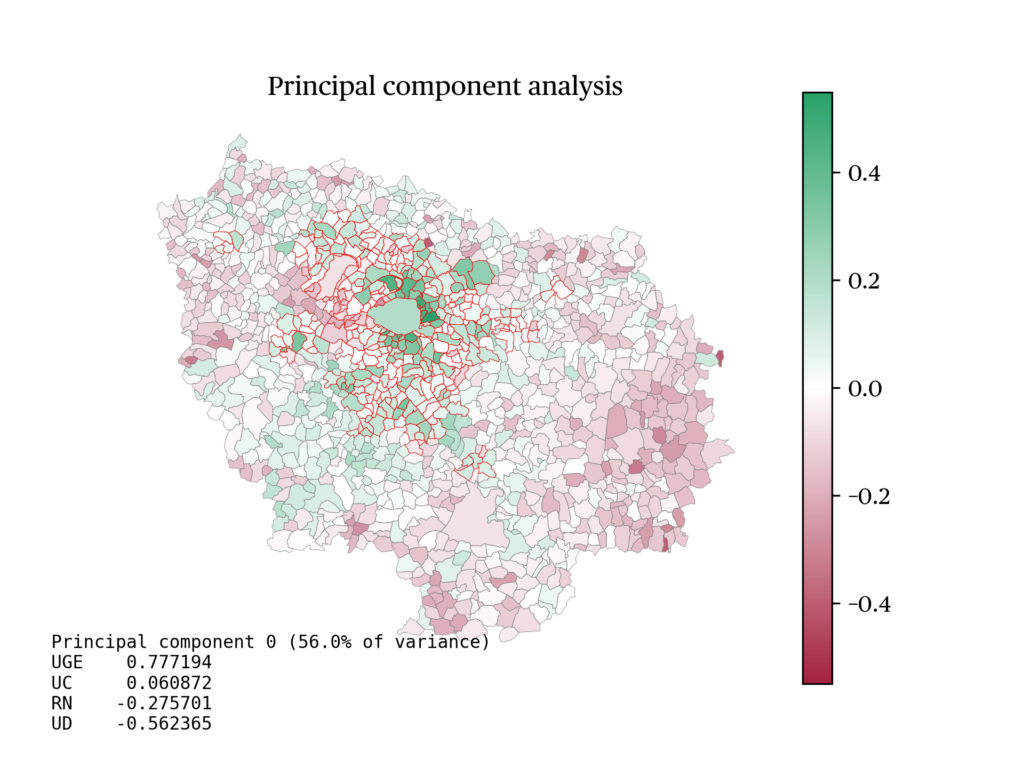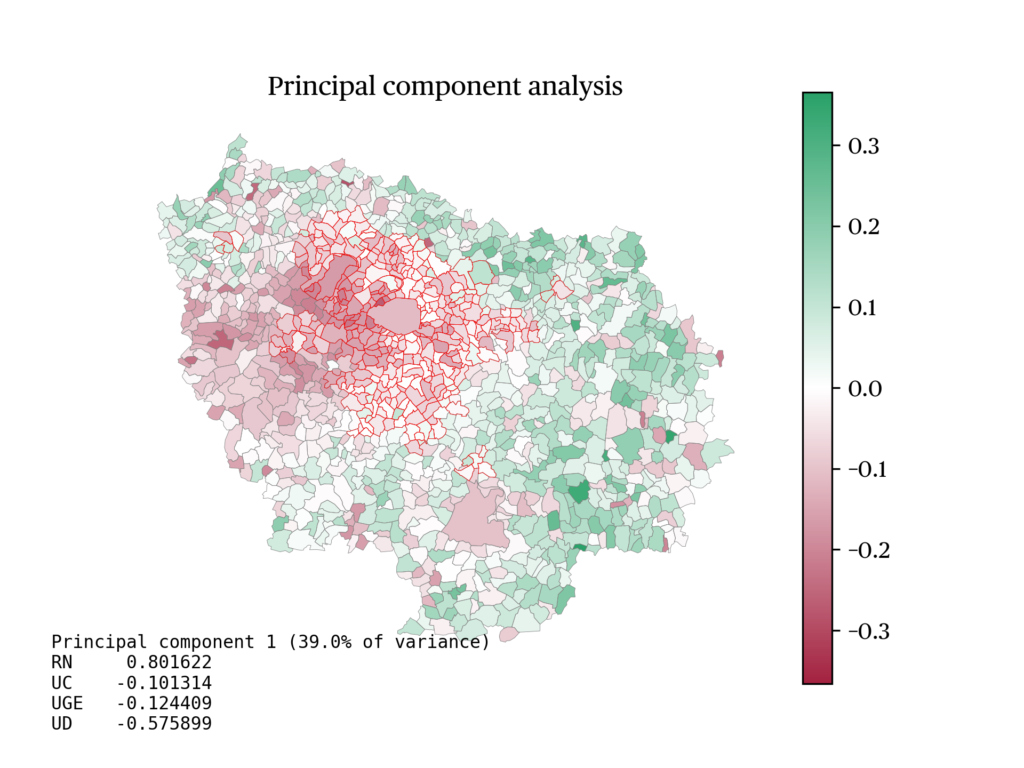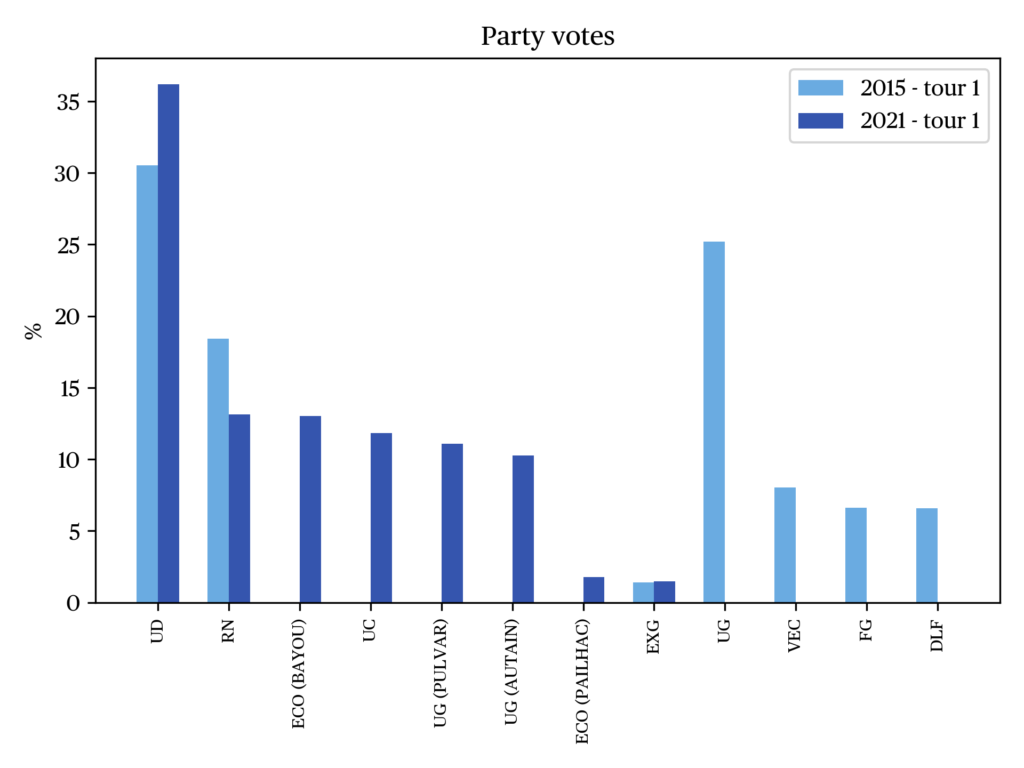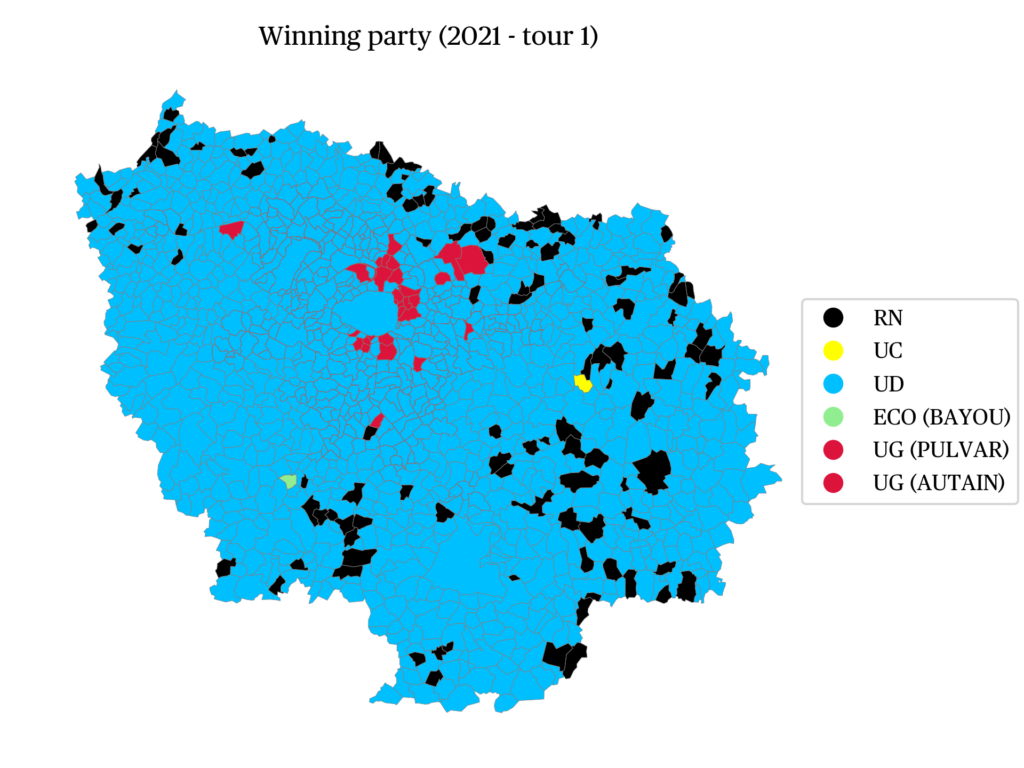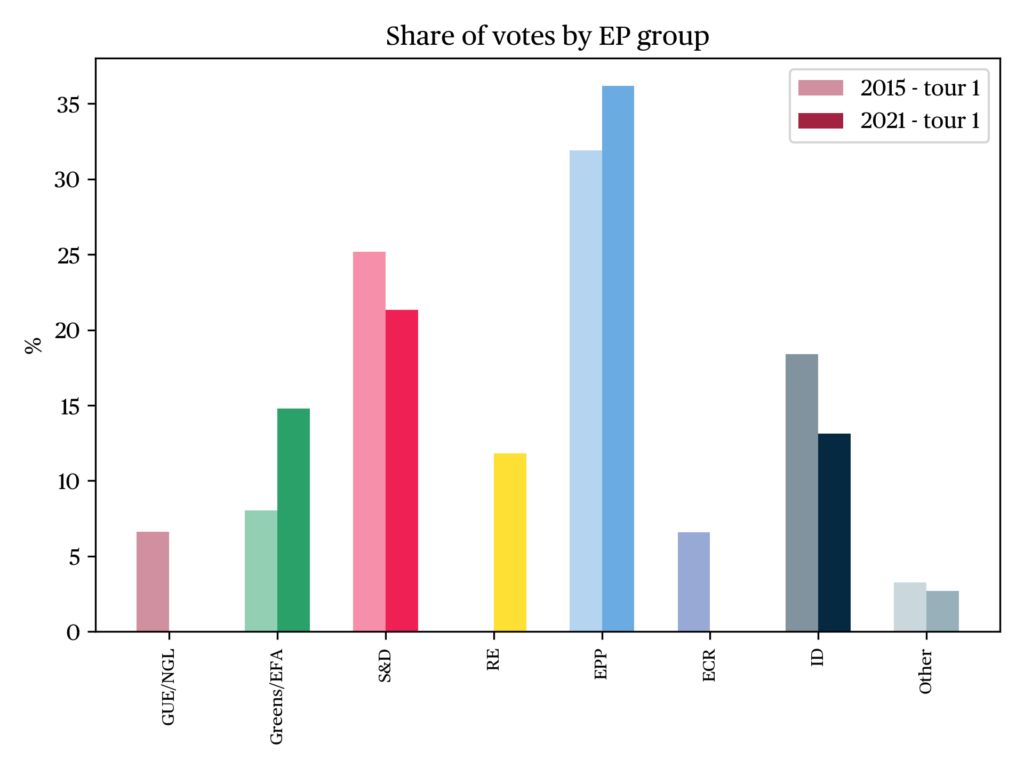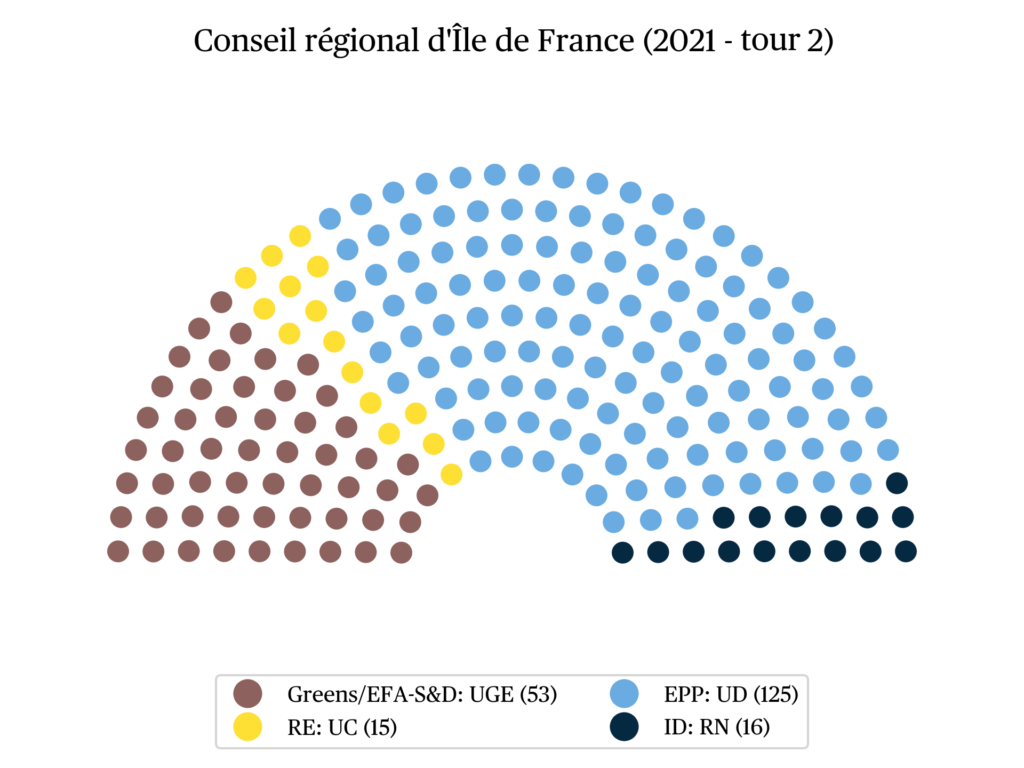Regional election in Île-de-France, 20-27 June 2021
Antoine Jardin
Research engineer at CESDIP/CNRSIssue
Issue #2Auteurs
Antoine Jardin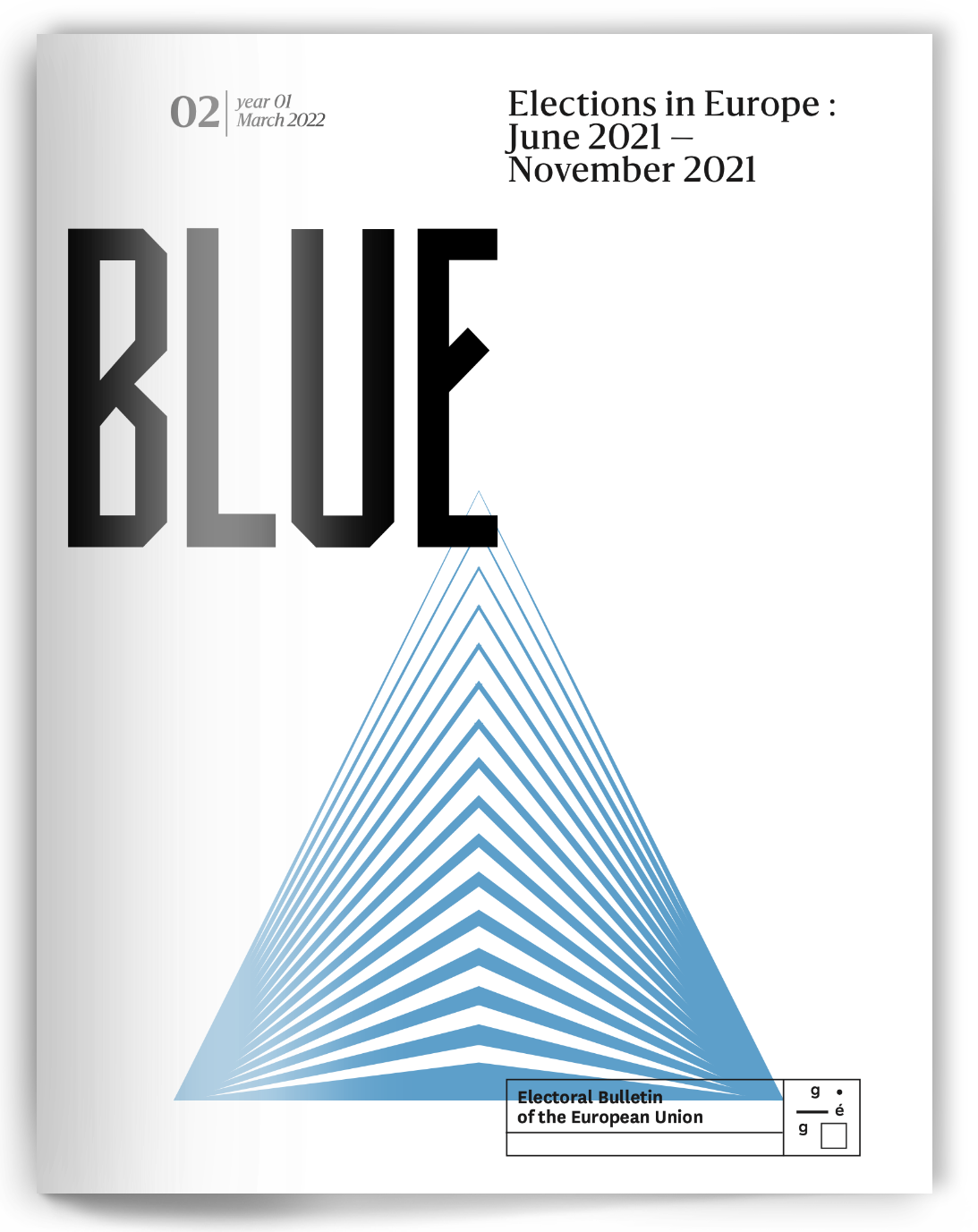
21x29,7cm - 167 pages Issue 2, March 2021 24,00€
Elections in Europe : June 2021 – November 2021
In recent years, French regional elections have often been regarded as “mid-term elections” in which the President of the Republic and his party were put to the test. In 2021, this dimension of a ballot revealing the balance of political power is all the more clear as the French party system is confronted with a profound destabilization that could lead to a lasting reconfiguration. With its ongoing shift in political cleavages and rapidly evolving party system, France has entered a phase of so-called “electoral realignment”: the political balance is shifting to a new stable configuration, going through a phase of crisis as the old equilibria are being called in question.
A record abstention with significant consequences
The 2021 elections were marked by a record drop in voter turnout, in the context of a long-lasting health crisis marked by several episodes of lockdown and strong economic and social uncertainties. While the 2020 municipal elections had taken place amid fears of contamination, in a country weakened by a shortage of masks and the absence of vaccines — eventually leading to the postponement of the second round —, turnout dropped further one year later despite significant improvements in the health situation. Nationwide, which had been 44.6% in the 2020 municipal elections, reached a record low of 33.3% in the 2021 regional elections, even though departmental and regional elections were held on the same day. While voter turnout at departmental elections had long been in decline, this had so far not been the case for regional elections. In Île-de-France, turnout was 65.3% in 2004, 47.1% in 2010 and 45.9% in 2015, and a significant drop in turnout was experienced in 2021 compared to previous ballots. Given such heterogeneous levels of mobilization, abstention levels need to be analyzed carefully in order to account for the dynamics of electoral change.
Media commentators typically tend to interpret changes in vote shares and majorities as resulting from changes in the political opinions and attitudes of the electorate. However, this assertion must be treated with great caution, since the differential mobilization of the various parties’ electorates can influence the outcome of elections even when political values do not experience such a profound and rapid shift.
The data from opinion and attitude surveys show that values are relatively stable over time, evolving according to long-term trends under the effect of social and demographic transformations such as generational change. The choice of candidates or parties made by voters on the basis of the same set of preferences and opinions, on the other hand, can vary rapidly according to the context and political offer. Therefore, the evolution of the projection of voters’ preferences onto the available political offer plays a more central role in explaining electoral change than the evolution of political attitudes.
FN/RN vote as a standard benchmark of mobilization cycles
The dynamics of mobilization and demobilization are most easily identified by considering the scores of those political parties that are the most stable in terms of both popular support and public discourse. The FN/RN vote is a privileged indicator here, since, as of 2022, it is seen as an old party alongside traditional left-wing organizations (PCF and PS), contrasting with both newer political movements (LREM, LFI) and parties that are being regularly reconfigured (RPR-UDF, UMP, LR-UDI). In this regard, the case of Île-de-France is paradoxical. Despite very high levels of victimization, particularly in terms of physical aggression, theft, and vehicle damage, Île-de-France is one of the regions where the FN vote is lowest. An additional paradox is that, within Île-de-France, the areas least affected by objectively detectable insecurity in specialized surveys are the ones with the most far-right voters. Île-de-France’s specific dynamics can be traced back to two distinct, simultaneous trends. First, the share of highly educated individuals among the electorate is particularly high, a fact which many surveys have shown to negatively correlate with support for the far-right. In addition, immigrants or descendants of migrants, often with origins in former French colonies, are overrepresented among working-class, precarious and less-educated citizens; this reduces the FN’s vote share, even though these populations experience high levels of victimization and intense fears in their neighborhoods.
At the regional level, the FN/RN went from almost 449,000 votes in 2004 (12.2% of votes cast) to 268,000 votes in 2010 (9.29% of votes cast), then 580,000 votes in 2015 (18.4% of votes cast) before reaching 285,115 votes in 2021 for 13.14% of votes cast. While RN leader Jordan Bardella achieves one of the worst historical scores of the FN in absolute terms (and as a percentage of registered voters), he obtains the second best vote share in his party’s history. Caution is required in order not to interpret these evolutions only in terms of relative levels. The relatively good score of the RN in the 2021 Île-de-France election results from the overall demobilization of the general electorate and its competitors, coupled with a certain retention of its own electoral base.
Points of comparison outside the regional ballot
It is often tempting to interpret each type of elections as having its own logic. This is particularly true for local or regional elections, where the territorial roots and personality of the candidates can have a major impact on voters. This also applies to movements and parties whose national leaders are much more influent than their regional candidates. In this area, the FN/RN and LFI votes are excellent examples.
To identify transversal patterns, comparing the 2017 presidential election, then 2019 European election and the 2021 regional elections can prove particularily informative. In this electoral sequence, involving the three most different types of elections of the French democracy, we notice clear common trends.
The far-right vote appears to have clearly fallen back, despite the circumstances of the yellow vest crisis and then the health crisis. Marine Le Pen gathers 708,000 votes in the first round of the 2017 presidential election and exceeds 1,033,000 votes in the second round. The RN list suffers a strong demobilization in the European election with 499,000 votes in 2019 and then declines to 285,000 votes in 2021. These short-term fluctuations show that there is indeed a large FN electorate that can be mobilized throughout the region, even if this mobilization has experienced a sharp decline, being divided by more than three within 4 years.
The scores of LFI have undergone similar changes. Jean-Luc Mélenchon obtained 1,224,978 votes in 2017 in the first round (i.e., regionally more than Marine Le Pen in the second round) but Unbowed France declined sharply with 218,578 votes in the European election, i.e., a sixfold division of its electoral base due to increased competition from EELV (561,000 votes and 15.9% of votes cast). Clémentine Autain, the leader of the LFI list, received 222,456 votes or 10.25% of the votes cast.
While the electorates and party bases of LFI and the RN occupy opposite positions in the political spectrum and build on very different social and local presence, the two parties experience similar difficulties in intermediate elections. Their strength depends largely on their leader, who is also a well-known and easily identified front-runner. While the FN benefits from a long-standing partisan affiliation and a lasting presence in the French political arena, LFI faces competition from variable opponents on the left, which contributed to its good performance in the presidential election but also to its relative fragility in other elections.
It would thus be very risky to draw lessons for 2022 from the electoral results of 2019 and 2021, as the dynamics of mobilization and demobilization and the evolution of the number of candidates influence the results in the first round of voting. LFI will face competition from far-left (LO, NPA) as well as center-left parties (EELV, PS, PRG with Christiane Taubira). Marine Le Pen, who for a long time had been the sole heiress of her electoral segment, having inherited the party from her father, is today facing vigorous competition from Eric Zemmour. Zemmour has managed to capture specific components of the nationalist, right and far-right middle-upper classes, while the RN’s electorate remains largely peri-urban, working-class, with few university graduates and many precarious workers.
Political dynamics of center parties
French political life is characterized by two main dynamics. The first is the long-standing and sustained rise of the far right, whose roller-coaster scores reach ever higher peaks in presidential elections. Although Marine Le Pen is perceived as having been severely defeated in the second round of 2017, she nonetheless achieved the best score in her party’s history and attracted no less than 22 per cent of registered voters (33.9 per cent of those who voted). Whilst this progression exerts an increasing pressure on other political forces, the RN vote remains highly controversial in French society. The far right is thus in a position of veto player, controlling the electoral threshold for access to the second round of elections while still being perceived as an unacceptable choice by a majority of voters. Moreover, the RN’s electoral pressure is exerted differently in elections with single-member constituencies such as the presidential election versus proportional (European) or list-based elections. By advancing to second rounds involving three or sometimes four parties, the main party of the extreme right exerts considerable pressure on the choices of voters who reject it. It is therefore not possible to understand the overall evolution of the French political system without taking into account the decisive and structuring weight of the RN vote. The second main dynamic, first observed in 2015, is the likely durable weakening of the PS and the cyclical weakening of LR. This has paved the way for LREM’s emergence by opening up a space at the center of the political spectrum, which also features several other parties (MODEM, Agir and now Horizon, the new party of former Prime Minister Edouard Philippe).
At the regional level, the LR vote is more structural. Jean-Paul Huchon’s left-wing list won in 2004 in a second round involving three parties, and managed to keep his seat in 2010. In 2015, Valérie Pécresse won, also in a three-way contest, against Claude Bartolone (PS) with a 100,000-vote lead. This electoral history underlines the importance of the pressure of the RN mentioned above in the context of second rounds involving three parties. In 2021 it was in a rare four-way tie that Valérie Précesse was largely re-elected, gathering 300,000 votes more than the United Left list led by EELV candidate Julien Bayou. In the first round of voting, she had obtained 500,000 votes more than her closest direct competitor, the RN’s Jordan Bardella. This is in contrast to the fact that, in contexts of strong mobilization, the Ile-de-France region is not markedly right-leaning: in 2017, the centrist candidate Emmanuel Macron came out on top with 1.4 million votes ahead of François Fillon, and in 2012, François Hollande defeated Nicolas Sarkozy in the region. The gap between LREM and LR was maintained in the 2019 European elections, with Macron’s party achieving 3 times the score of the parliamentary right-wing opposition (27.2% against 9.28% of votes cast).
The score of the socialist left, on the other hand, is experiencing a lasting dilution. Half of their supporters, especially among the upper classes and highly educated, have rallied to the LREM vote, while competition from EELV and new fragmented candidacies on the left (who themselves struggle to build a stable voter base) are reducing their regional influence. The left’s loss of the region in the 2015 elections, combined with the profound failure of Benoît Hamon’s presidential candidacy in 2017, concluded a series of unprecedented local defeats. The social and territorial basis of these political forces have eroded, leading to increased elecotral fragmentation.
Socio-spatial distribution of the vote
When compared to other regions of France, voting behavior in the Ile-de-France region is highly specific. The intensity of social polarization is higher than in other regions, while at the same time the share of immigrant population and descendants of migrants is higher than in the rest of metropolitan France. To analyze the spatial distribution of electoral results, we use a multivariate descriptive method called PCA. This method makes it possible to reveal the main oppositions and similarities between the variables and the territories. Several axes are described. They are all orthogonal to each other and account for a decreasing part of the global inertia of the initial data. The first axis is the most structuring, preserving 56% of the initial inertia of the second round results.
The green areas correspond to municipalities where the left-wing vote – represented in the second round of the 2021 election by a coalition led by the Ecologists – is strongest. The red areas, on the other hand, are characterized by stronger support for center-right parties and an over-representation of the RN vote. The spatial distribution of left-leaning and right-leaning municipalities only partially reflects the center/periphery cleavage, and would therefore require a more specific analysis. Paris’s internal heterogeneity, which is not shown on the maps, reproduces the dynamics at hand in the near suburbs. The analysis of the red areas is relatively complex: while they are all characterized by a low level of left-wing votes, significant internal heterogeneity exists. In the green areas, on the other hand, the levels of support for the various left-wing parties (apparent in the first round of voting) are largely correlated.
The second axis, which accounts for 39% of the variance (or 95% of the total variance on two axes) captures the opposition between the distribution of the center-right and RN votes. This opposition does not operate along a center/periphery gradient but along an east/west gradient. To the west of Paris, we find areas characterized by a higher prevalence of the right-wing vote (V. Pécresse), while the northern and southern confines of the region and its eastern third (corresponding to the department of Seine et Marne) show a clear overrepresentation of the FN vote. It is not these peripheries that stand out from the rest of the region, but rather the Paris metropolis, whose social and political structure strongly diverge from the national average. We also note that distance from the urban center is only a fragile approximation for more complex spatial structures.
On the whole, the Ile-de-France region stands out because of its atypical character: low levels of support for the far right, a high level of education, and strong social segregation lead to a dominance of parties located at the center of the political spectrum.
citer l'article
Antoine Jardin, Regional election in Île-de-France, 20-27 June 2021, Mar 2022, 28-32.
à lire dans cette issue
voir toute la revue






